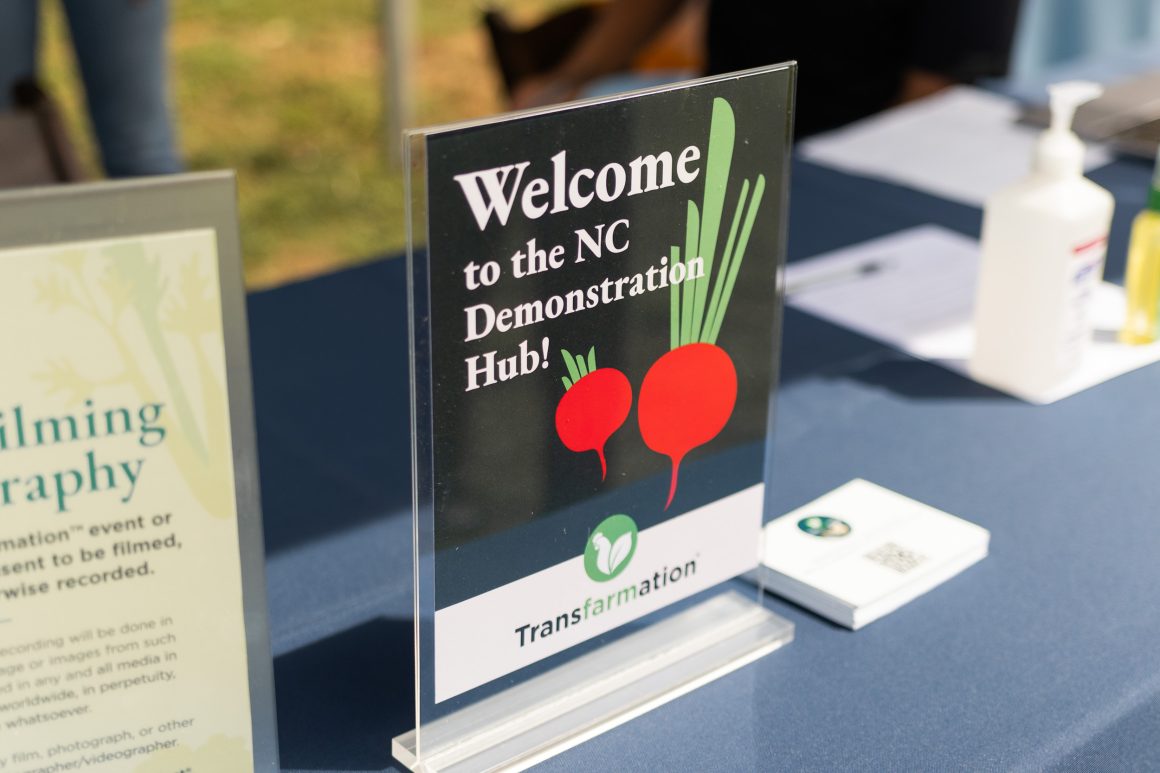Agriculture accounts for 10% of greenhouse emissions in the United States and 25% globally, hence the need for sustainable projects. One such is The Transfarmation Project® by Mercy for Animals, which has transformed a poultry barn into an eco-friendly vegetable greenhouse in North Carolina. Aptly, the project’s team says that “specialty-crop farming generates much less greenhouse gas than factory animal farming.”
Paulomi Joshi, Demonstration Hub Project Manager of The Transfarmation Project® took Selina Wamucii through the project.
From Barn to Greenhouse
Joshi first demonstrates growing vegetables in the 15,000 square-feet poultry barn-turned-greenhouse:
“Transfarmation’s North Carolina demonstration hub includes four growing systems: deep water culture, raised beds, containers and bato buckets to allow for a variety of fruits and vegetables.
“Currently, the Transfarmation™ demonstration hub is growing specialty crops including a variety of beets, Swiss chard, lettuces, melon, a variety of squash, peppers, tomatoes, and mushrooms.”
Farmers, both organic and animal producers, can also learn a few sustainability bits from the Tranfarmation project:
“Transfarmation’s demonstration hub is an upcycled poultry house that uses the existing structural frame for the greenhouse. An enhanced environmental control system was installed to allow the farmer to schedule when each growing system is watered, to start the fans and cooling wall if temperatures rise above the set threshold, or to start the heater if temperatures go below the threshold. The environmental system logs the trends of the start/stop of each component, offering us insights into the environmental conditions of the greenhouse and success of the crops.” She explains at length.

Transfarmation Project® Promotes Eco-friendliness via Specialty Crops
“Additionally, transitioning from factory farming to specialty-crop production has profound environmental benefits:
Reduction in greenhouse gas emissions: Specialty-crop farming generates much less greenhouse gas than factory animal farming, aiding in climate-change mitigation.
Soil remediation: Farm transitions offer opportunities to revitalize degraded soil and improve soil health, which can help protect ecosystems and foster biodiversity.
Water conservation: Specialty-crop farming uses water more efficiently than factory animal farming, addressing issues of excessive water consumption and pollution.
And based on your work, are farmers getting more responsible in animal rearing?
“Industrial animal farmers are typically bound by corporations whose goal is profit, not the welfare of the animals, farmers, or environment.” Says Josh. “The majority of animal products sold are produced on factory farms where corporations, not the farmers, dictate how the animals are raised.
“The Transfarmation™ demonstration hub exemplifies how transitioning out of the contract-farming system can lead to innovative and sustainable agricultural practices, offering a hopeful vision of a brighter future for farmers.”
Joshi ends on this hopeful note.
For more information, you can review Transfarmation®’s press release here from the demonstration hub ribbon-cutting on September 6.
Global Sustainable Farming Statistics
Sustainable farming initiatives such as the one by Transfarmation Project® could change global climate environmental degradation. At the international level, 45 nations including the United States pledged $4 billion in 2021 to regenerate agricultural soil. Countries that are leading in the sustainable agriculture sphere in the 2020s include Japan, South Korea, Germany, Canada and Australia, according to Economist Impact. Interestingly, three of these countries have the world’s highest livestock density at 4.1 head per hectare for South Korea, Japan and Germany. This could mean unsustainable livestock production despite good crop practices.
How much does agriculture contribute to global emissions?
According to the World Economic Forum (WEF), agriculture accounts for 25% of global greenhouse emissions. Furthermore, 19% to 29% of the total greenhouse gas (GHG) emissions come from food systems. Alarmingly, 56% of non-carbon dioxide gases are from the agricultural sector. This all the more underscores the need for sustainable farming and livestock rearing projects.
How costly is sustainable agriculture?
Transforming food systems to sustainability requires $300 to 350 billion annually for a decade, per a World Bank report. This means it is expensive to increase food cultivation for a growing population and simultaneously keep the environment clean.
What solutions are there to meet sustainability needs?
The Paris Agreement of 2016 is one way towards sustainability, especially by signatory nations that contribute 55% of global emissions. More nations followed in 2017, with an overall aim to keep the global temperature increase below 1.5ºC. Another way is to use nature-based methods which could provide at least 37% of actions necessary to reduce global warming. One such nature-based method is cleaning shorelines to increase fisheries, and thus continue feeding 3.2 billion seafood-dependant people.
